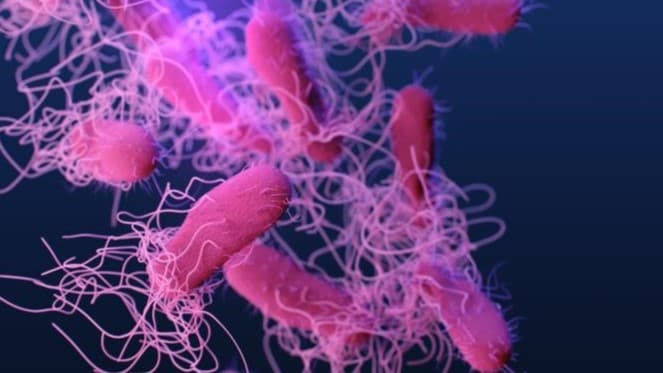Key points
- Salmonella are bacteria (germs) that can make people sick
- People can get infected with Salmonella after swallowing the bacteria.
- CDC estimates Salmonella cause about 1.35 million infections in the United States every year.
- Contaminated food is the source for most of these illnesses.

Overview
Salmonella are bacteria (germs) that can make people sick with an illness called salmonellosis.
People can get infected after swallowing Salmonella.
Salmonella live in the intestines of people and animals. People can get infected with Salmonella in many ways, including
- Eating contaminated food
- Drinking or having contact with contaminated water
- Touching animals, animal poop, and the places animals live and roam
Types
Although scientists have identified more than 2,500 Salmonella serotypes (types), fewer than 100 types cause most human illness.
Reminder
People at risk
Anyone can get a Salmonella infection. But some groups of people have an increased chance of infection, and some people may become seriously ill. These groups include:
- Children who are younger than 5 years (and especially children who are younger than 1 year)
- Adults who are 50 years and older with underlying medical problems, such as heart disease
- Adults who are 65 and older
- People who have a weakened immune system
- International travelers
Quick facts
Salmonella are a leading cause of foodborne illness, hospitalizations, and deaths in the United States and worldwide.
Salmonella are one of the leading causes of foodborne illnesses. Salmonella also are the leading cause of hospitalizations and deaths linked to foodborne illness.
Spotlight on chicken
Infection is more common in the summer.
Warmer weather and unrefrigerated foods create ideal conditions for Salmonella to grow. Promptly refrigerate or freeze perishables (foods likely to spoil or go bad quickly), prepared foods, and leftovers.
Salmonella cause more infections than you might suspect.
CDC estimates that only 1 in every 30 Salmonella infections is diagnosed. Why? Most people with food poisoning do not go to a doctor or have a patient sample submitted for laboratory testing. So, we never learn which germ made them sick.
Antimicrobial-resistant Salmonella infections are becoming more common.
Antimicrobial resistance in Salmonella happens when the bacteria develop the ability to defeat the drugs designed to kill them. That means the bacteria are not killed and continue to grow. Resistance to antibiotics is increasing in Salmonella, which can limit treatment options for people with severe infections. One way to slow down the development of antimicrobial resistance is by appropriate use of antibiotics in people and animals.
